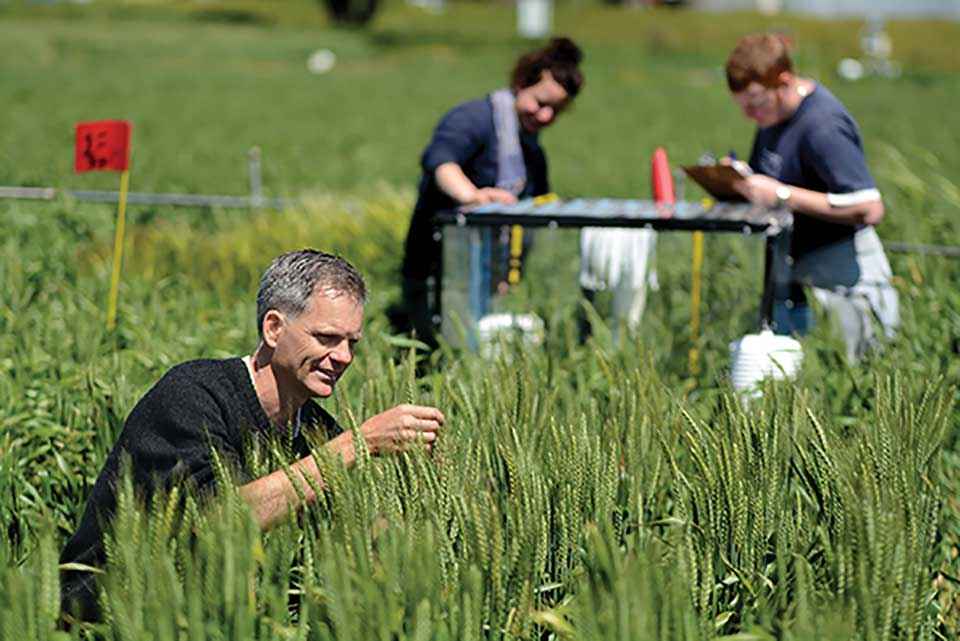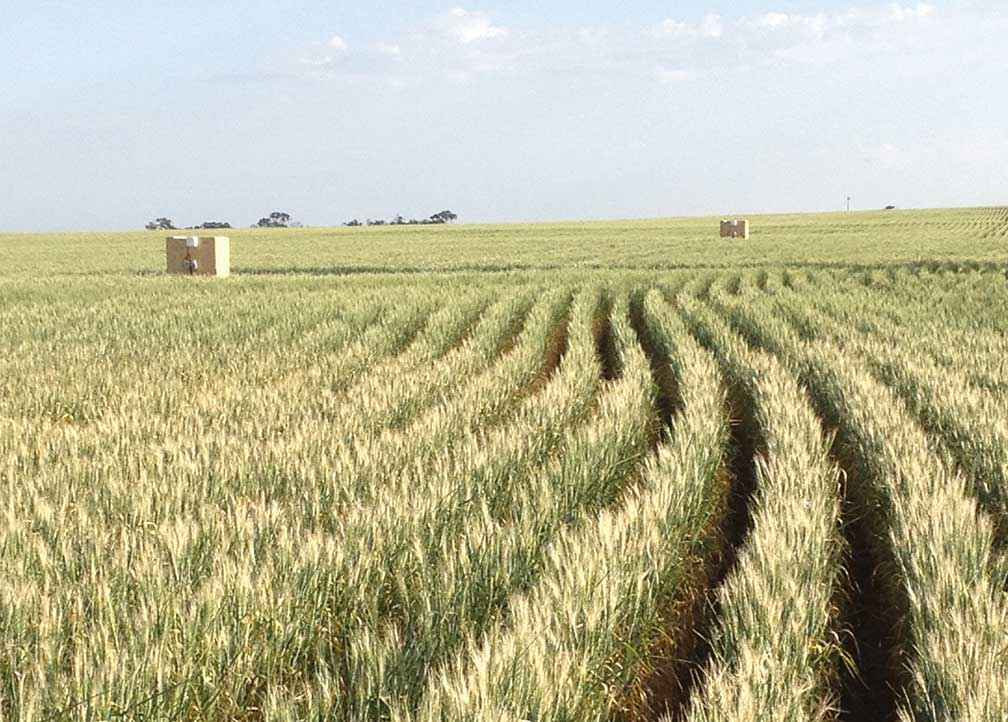Victorian Landcare Magazine - Winter 2017, Issue 69

Each year crop losses from frost and heat events cost the Australian grains industry tens of millions of dollars making it critical to better manage the risk and impact of extreme weather.
While frost causes about $33 million in losses to crops annually, one heat wave near spring grain flowering in 2009 cut the returns by $82 million in the Wimmera alone.
Globally, atmospheric carbon dioxide levels are rising. While this increases crop water use efficiency and yield it also causes a decline in grain quality (protein).
We need to better understand how factors interact to affect yield stability of arable crops so adaptation strategies for a future climate can be developed. Grain farmers face the double dilemma of managing the risk of frost and the risk of heat wave damage at the vulnerable times of flowering and grain filling.
Crop simulation modelling provides a powerful tool to investigate the combined effects of climate and weather variables on wheat production and assists in developing adaptive management strategies.
However, current crop models do not adequately account for the response of wheat to extreme heat (or frost) during the flowering and grain filling phases. It is also unclear how heat waves interact with elevated carbon dioxide, and there is a lack of data from experiments to formulate models and calibrate their outputs.
A range of projects designed to increase our understanding of wheat response to extreme temperature effects and elevated atmospheric carbon dioxide are currently underway. The Australian Grains Free-Air CO2 Enrichment trial site in Horsham is being used by scientists from Agriculture Victoria and the University of Melbourne to examine the impact of simulated heat waves on wheat growth under contrasting atmospheric carbon dioxide concentrations.
When crops were exposed to a simulated heat wave five days prior to flowering, grain number and grain yield were reduced by 18 per cent, but grain size was unaffected. When the heat was applied 15 days after flowering both grain number and size were reduced resulting in a 14 per cent reduction in yield.
"A range of projects designed to increase our understanding of wheat response to extreme temperature effects and elevated atmospheric carbon dioxide are currently underway."
This compares with elevated carbon dioxide increasing wheat yield by 19 per cent in the same trial, with grain number increased by 14 per cent and grain weight increased by 4 per cent. Whether carbon dioxide advantages buffer some of the heat wave impacts to wheat is still unclear.
The affect of frost is also being tested using artificial frost treatments being applied to field wheat. When wheat was exposed to frost over one and two progressive nights (where temperatures varied from -0.7 to -4.2degrees Celsius) there was a 7.2 per cent reduction in yield for every degree Celsius below zero (up to -4degrees Celsius) for a single frost event. This reduction increased to 11.8 per cent for each degree Celsius below zero (up to -3degrees Celsius) when frost was imposed over two progressive nights, which indicates an additive affect of multiple frosts.
Using such data, crop simulation models are being improved to account for weather and climate factors linked with climate change effects. This should provide a platform to extend the scenarios beyond the experimental realm, and increase our understanding of the impact of climate, weather and soil interactions across different geographical regions.
These research programs will ultimately assist with the development of adaptation strategies both agronomic and breeding (better suited crop varieties) for limiting the impacts of climate change on arable crop production.
This research is supported by the Department of Economic Development, Jobs, Transport and Resources (Agriculture Victoria) and The University of Melbourne, with funding from the Australian Government Department of Agriculture and Water Resources and the Grains Research and Development Corporation,
Dr James Nuttall is Agriculture Victoria’s Senior Regional Research Agronomist.

Above: Frost affected wheat in the Wimmera in 2015. The chambers monitor the relative impact of frost on yield.